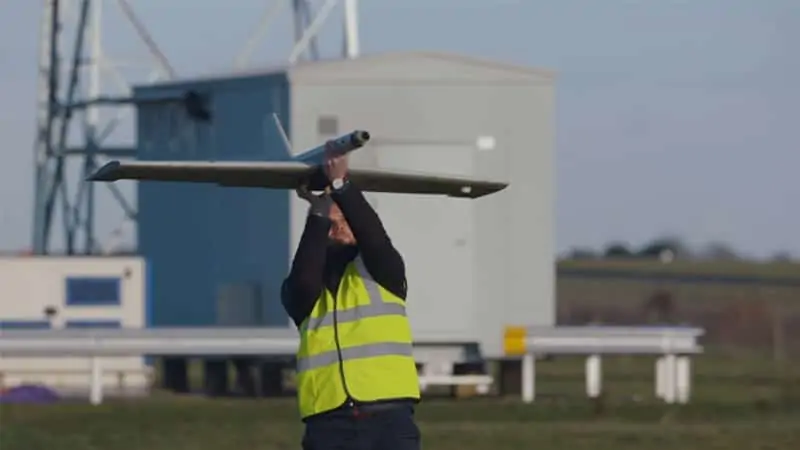Cranfield University has announced that the first test flights to establish the principles for the National Beyond visual line of sight (BVLOS) Experimentation Corridor (NBEC) have successfully taken place at Cranfield Airport. NBEC is a collaboration between Cranfield University and Blue Bear Systems Research Ltd that aims to create an experimentation corridor that will enable drones and unmanned aerial vehicles (UAVs) to fly in the same airspace as manned aircraft.
Blue Bear executed three-kilometre Extended Visual Line of Sight (EVLOS) race track flights within the Cranfield Air Traffic Zone, utilising their Blackstart Unmanned Aerial System (UAS) towards their facility in Oakley. Regulations currently require drones to operate within visual line of sight of the operator at all times. Under EVLOS conditions, observers are used to maintain the line of sight while providing situational awareness to the operator.
The NBEC partners believe the key to future drone operations is not segregation, but unification ensuring fair and equitable use of airspace for all. NBEC will provide a safe, managed environment for drone and unmanned aircraft experimentation which will work towards their integration into controlled and uncontrolled airspace. The aim is to see the corridor eventually stretch across Bedfordshire from Blue Bear’s headquarters in Oakley to Cranfield University’s airport.
Ian Williams-Wynn, Managing Director of Blue Bear, said: “When fully operational, the NBEC will be operated with Blue Bear and Cranfield running their respective systems, and will create an environment that allows other companies to come and test their UTM (Unified Traffic Management) concepts in a safe, managed environment.”
“These initial flights, enabled us to provide Cranfield Airport with reassurance from an operational safety perspective that the systems Blue Bear had developed and put in place are appropriate and compatible with Cranfield Airport operations.”
Professor Iain Gray, Director of Aerospace at Cranfield University, said: “The Government’s new aviation strategy green paper highlights the exciting potential of modernising the UK’s airspace. These initial flights, mark an important step in the realisation of NBEC, which will be a national asset that will support the journey to the creation of a Unified Traffic Management system.”
The Civil Aviation Authority (CAA) recently hosted the NBEC Team at its London headquarters, and provided the team with support and encouragement on their project and their staged risk, managed approach. Workup flights will be continuing at both ends of the NBEC Corridor throughout 2019.
During this first phase of testing, the Cranfield Air Traffic Zone was cleared of manned aircraft, to enable the project team to establish the principles for future integrated NBEC operations.
Watch a video of the test flight below:



















